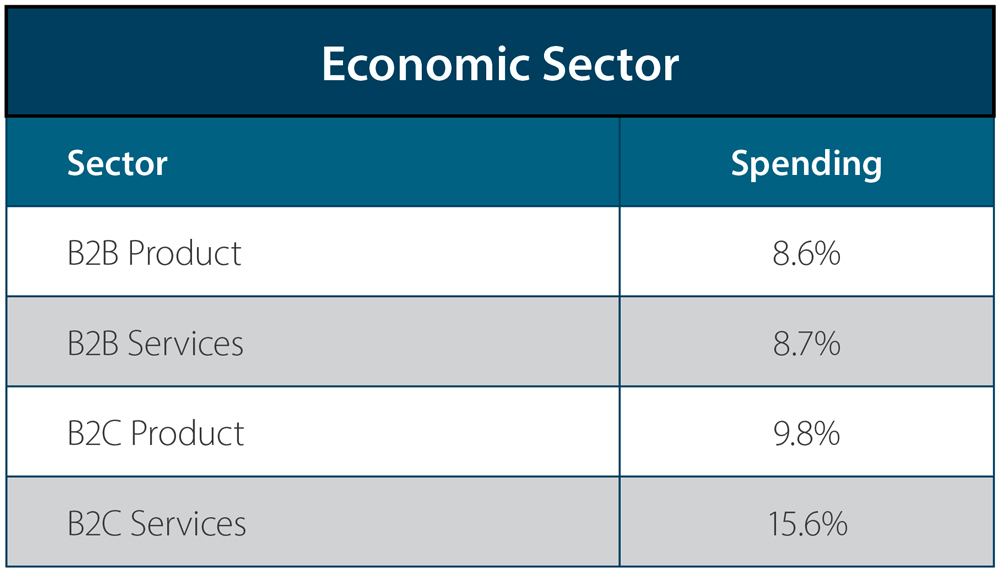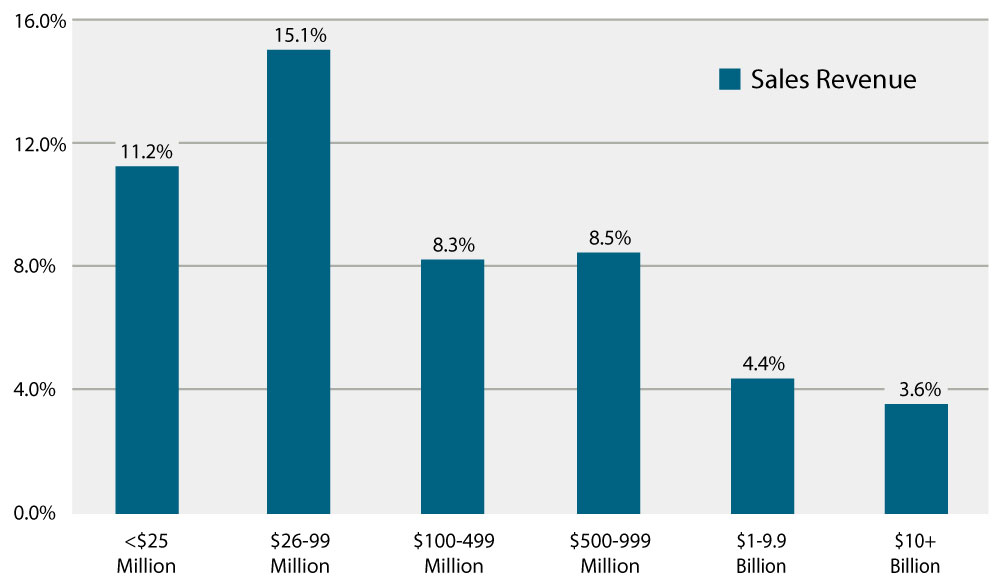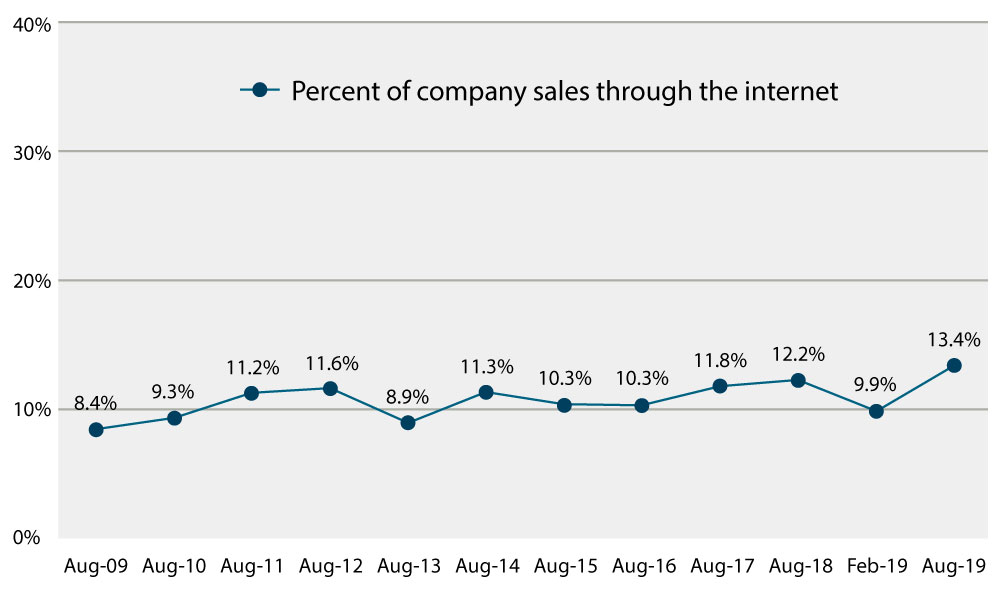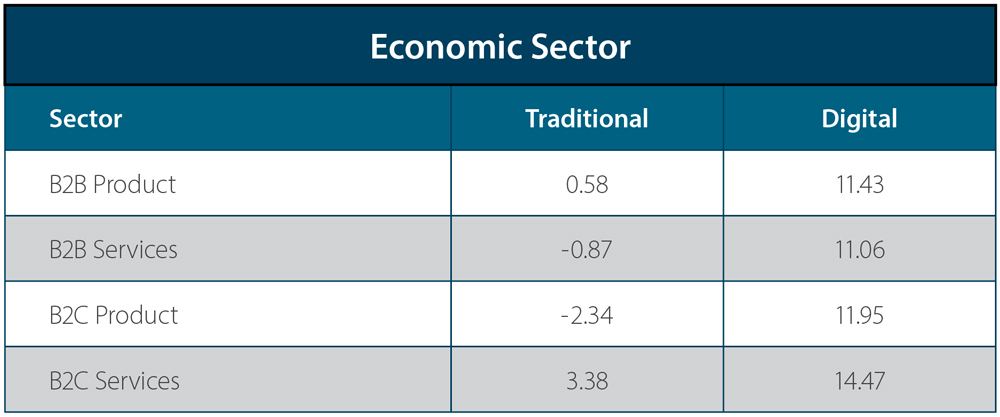What to spend on marketing in 2020

Vistage member and speaker Marc Emmer provides an annual analysis of marketing investment and trends that inform marketers’ strategic decisions. A key source for this analysis is The CMO Survey, published biannually by Duke University, Deloitte and the American Marketing Association. Readers should note that the survey includes data provided by chief marketing officers and may skew toward companies that invest in marketing. Twenty-seven percent of the survey’s respondents are from companies with less than $25 million in revenue.
As we move into 2020, several prominent trends inform on the future of marketing. Total marketing spending will increase around 9% next year, as methods used to deploy marketing investment will undergo a seismic shift.

There is movement from developing new products (as one would expect in an up-cycle) toward improving sales and marketing productivity. In fact, growth in customer relationship management (CRM) systems is outpacing spending in branding and new product development.
B2C service companies are outspending product companies, especially in digital media. A focus on return on marketing investment (ROMI) and analytics coincides with an uptick in online conversion. Yet marketers are also struggling with proving return on certain activities such as social media and social awareness.
Doubling down
Perhaps sensing potential weakness in the economy ahead, companies are focusing on their core markets (market penetration).1 Companies may be less apt to make big bets on new products and more likely to build their existing markets. High-growth companies are dramatically outspending low-growth companies as they try to buy share, as demonstrated by the numbers in the table below.

Smaller companies are ramping up
The range of marketing spend varies dramatically by size and industry. Small companies can spend as little as 1% on marketing, with those participating in the CMO Survey spending closer to 9% as a percent of revenue. The adoption of software as a service (SaaS), and especially subscription pricing, is having profound implications on spending. Companies with predictable revenue build greater enterprise value, and therefore have more incentive to acquire new customers.

The trends clearly demonstrate that smaller companies are ramping up their investment much faster than larger companies. This could be a result of new marketing tools and SaaS products that reduce cost and increase ROI. Marketing is the great equalizer.
Marketing Budget Growth: Sales Revenue

Mashup of applications
Not too long ago, CRM was a four-letter word in many Vistage members’ companies. Chief executives struggled with poor implementations, high costs and marginal return on investment. The advent of marketing automation technologies has tipped the scales toward greater investment in marketing, in part because marketers can create highly tailored campaigns that drive sales productivity and can be measured with pinpoint accuracy. CRM investment is up 9% this year – consistent with Vistage Research data which has revealed CRM as the top technology investment among members in 2019.
To achieve the desired level of automation requires access to a litany of tools including lead generation, email automation and analytics technologies that integrate with CRM. Large technology providers such as Microsoft are building their solutions (applications such as Teams, Skype and Power BI are bundled with CRM) in an effort to fend off other providers such as Salesforce. For example, Zoho aggregates over 40 applications into one solution.
Over time, bundled applications will have a greater level of integration. For example, “AI (artificial intelligence) as a Service” offerings will level the playing field and provide access for smaller companies who could not otherwise afford it.
While online sales are on the rise, they still skew to B2C
While B2B companies are acquiring about 9% of revenue online, B2C companies are much more likely to acquire clients online (17% of revenue for product companies and 29% for service companies).
Investment in mobile is expected to swell from 13% of marketing spend to 22% in five years, in part because of greater adoption of mobile transactions.

Specialization
Marketing departments are under stress, requiring a litany of skills to remain relevant. Today, the contemporary marketing organization must be adept at digital marketing, web, search engine optimization, public relations, graphic design, branding and marketing services. The number of hires in marketing departments will rise 6% this year. Marketers are dramatically increasing spend on training. Look for companies to build competency in key areas (such as digital) while outsourcing low-value activities.
B2C services investment in digital outpaces other sectors
Trends toward bundling and subscription are fortifying B2C service investment. While digital marketing spend is up 12%, traditional media investment is in decline, as reflected in the table below.

Other key trends and technologies for 2020
Technology continues to drive change within marketing. Here are six key trends that will affect marketing strategy and decision-making over the next year:
- Chatbots on the rise: As consumers adopt self-service, chatbot technologies are becoming more human and are providing more personalized service.2 Bots are expected to add a whopping $100 billion in retail sales by 2023 while reducing cost.3
- Social media apps a strong source of conversion: 72% of Instagram users have purchased on the app. 70% of Pinterest users use the app to find new products.4 Consumer tastes on initiating purchases through social media are changing.
- VR and AR tools improving customer experience: Virtual and augmented reality tools are improving the customer experience by providing the opportunity to test or visualize products before buying them.
- Use of private messaging apps gain booming popularity: WhatsApp and Viber have gained massive adoption.5 In particular, look for more utilization of peer money transfer among users of messaging apps.
- Zero-click search results makes online user experience more convenient: Google has expanded its algorithms to provide answers to questions directly on a Google search result with no need for the user to click through to a site. Amazon has upped the ante on its voice-based search technology (resulting in about one in four search results today).6 Marketers will have to adjust to other changes in the Google algorithm that promote hyper-local search results.
- Analytics technologies help focus on metrics: More companies are realizing the power of analytics tools to help demonstrate the impact of marketing spending over time. Large companies with more sales from the Internet see a stronger contribution of marketing analytics to company performance.
Distinct acquisition targets
One key trend entering 2020 is a clearer delineation of metrics by acquisition type. Clients are acquired through:
- Word of mouth – Through referral sources, LinkedIn campaigns and a multitude of other available platforms, sales and marketing have ample opportunities to plants seeds with potential customers.
- Strategic marketing – Companies create a web, i.e., through search engine optimization (SEO) and paid search, to capture opportunities online.
- Target marketing – With the support of marketing, sales targets specific markets and customers.
Sophisticated marketers are tracking acquisition cost, conversation and lifetime value across all three acquisition types with greater precision so they can adjust deployment of resources accordingly.
The bottom line
Marketers are combining technology and human capital to achieve more productive digitized solutions that effectively track prospects through their customer journey. Sales teams are behaving more like partners to marketing to create more cohesive and integrated sales and marketing systems that increase the number of opportunities and drive conversion.
References
1 The August 2019 CMO Survey
2 12 Digital Marketing Trends for 2020 by Alex Membrillo, Cardinal Digital Marketing
3 4 Major Marketing Trends for 2020 and Beyond by Alp Mimaroglu, Entrepreneur
4 Top Marketing Trends for 2020 by Christian Thomson, Forbes
5 12 Digital Marketing Trends for 2020 by Alex Membrillo, Cardinal Digital Marketing
6 4 Major Marketing Trends for 2020 and Beyond by Alp Mimaroglu, Entrepreneur
Related content
Category: Marketing
Tags: Budget, Marketing, social trends

